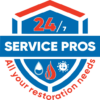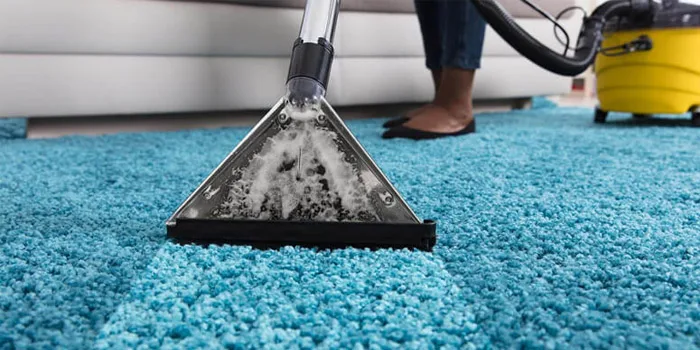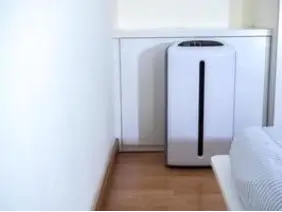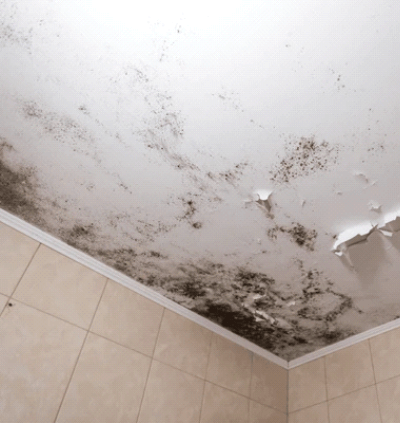Mold in walls is a serious yet undetected issue in many houses. Mold grows in dark, damp, and warm places. Walls provide the best environment for mold growth. Since the growth starts behind the wall and in between the layers, it goes unnoticed for a long time.
Mold in walls poses a greater threat than mold on visible surfaces. Since you cannot see behind your walls, mold can pollute your air and affect other areas. There are a few symptoms of mold growth in walls but most of them do not become visible early on. Hence, it’s important to regularly test for mold inside walls.
You might have understood that detecting mold in walls is no easy task. But we have a few tips to help you out. Let’s discuss a few signs that can tell you there’s something moldy going on behind those walls.
Common Signs of Mold in Walls
Mold in walls can be detected by paying attention to the following issues. You might get a hint of mold growth early on, but in most cases, these signs show up after the damage is done.
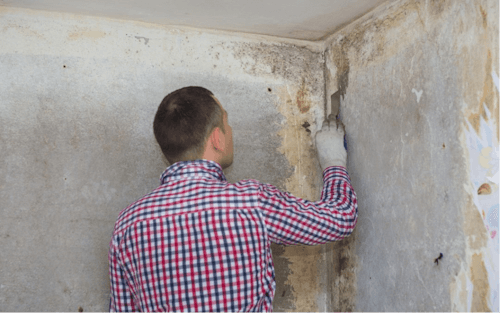
Strong Odors
If there’s an odd smell lingering in your house, it’s a sign of mold in the walls. Mold has a strong damp odor, almost musty. This smell tells you there’s mold in your house even if you can’t see it.
Increased Health Issues
You might notice increased allergic reactions. A runny nose, watery and itchy eyes, irritated throat, etc. are all signs of mold. If you get sick often and don’t get better, it’s because there’s mold inside the walls.
Visual Signs of Water Damage on Walls
Any damp spots on your wall or stains are a sign that there’s mold in the walls. Take prompt action when you see water damage because mold is already growing behind the surface of your walls. It will damage the drywall and cause structure rot.
Soft Drywall
Drywall is made from sturdy material If your drywall has gone soft, it’s because the excess moisture and water buildup have caused mold growth in this area. This issue needs immediate attention. Call mold removal experts to prevent further damage.
Ways to Test for Mold inside Walls
Mold testing companies have the required equipment and kits for testing mold in walls. You can either hire a mold removal company or do the testing yourself. For a DIY mold test, you can get a mold test kit.
These kits are effective but not everyone wants to spend money on them. Those who want to test for mold without spending much can do so by looking for signs of mold behind walls. You can also remove a little piece of wall to check if there’s any water damage behind the walls.
However, manual and DIY testing is not always 100% foolproof. Other tests are much more accurate, including:
Air Test
An air test is done through an air pump. It collects the air sample which is sent to a lab. The air sample is then analyzed to check if there are any mold spores in the air. If the air test confirms mold spores and you see no visible mold in the house, check behind the walls. That’s where the culprit is hiding.
Moisture Readings
A moisture reading is done using a moisture meter which detects the amount of moisture in your house. If the meter shows a reading higher than 20 percent, there’s mold in the house. Again, if no visible mold is seen, look for mold in the walls.
Surface Swab Test
Surface swab tests are effective if there’s a sign of mold. If you see a stain or a damp spot on any wall, take a swab and rub it on the surface. The swab is analyzed in a lab to check whether there’s mold or not. Surface swab test results might take some time because the culture is observed for a day or two.
How to Remove Mold in Walls
Once you have spotted the damaged area, look for any causes or signs of water damage. Fix them before you replace the wall. Follow the steps given below:
- To remove mold, the entire area needs to be cut out.
- Once you have cut the affected area, remove the drywall as well.
- Throw out the mold-affected pieces and get the new ones.
- Measure the hole in the wall.
- Cut out a piece of drywall with the same size and thickness.
- Install the drywall.
- Replace the surface wall as well and paint.
- Make sure everything is dry. Run a dehumidifier for a few hours to make sure there’s no excess moisture in the air.
Common Causes of Mold in Walls
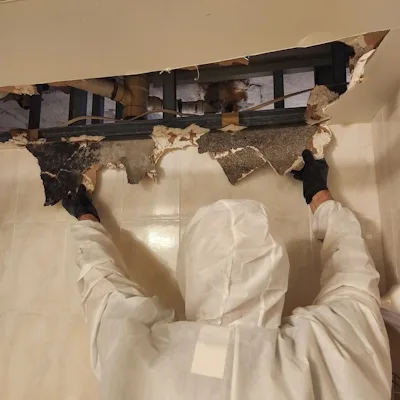
Before getting into the process of testing for mold inside the walls, you should know what are the potential causes of mold growth in those sneaky spots. You must remove the cause before you treat and kill mold in walls.
Water Leaks and Burst Pipes
Water leaks under floor beds, behind walls, and on the roof are major causes of mold in walls. Before installing your walls and floor, make sure there are no damaged, rusty, or burst pipes.
Mold in Air Vents
Check for mold growth in your air ducts and vents. If these parts of your HVAC are mold-affected, the spores will get trapped behind walls. They have the ideal environment to grow behind your walls, becoming a common cause of mold growth.
Clogged Drains
Check your bathroom, kitchen, and laundry drained regularly. If these drains are clogged or damaged, the water will start seeping into the surrounding area. This excess water buildup will cause mold to grow.
Water Deposits or Flooding
If there’s stagnant water in any part of the house, or outside the house, the moisture will accumulate behind drywall, leading to the growth of mold in walls. Flooding is often followed by mold growth inside walls and under the walls. After a flood, call flood damage services for mold prevention.
Excess Condensation
Look out for more than usual condensation on your windows, metallic objects, or concrete surfaces. This is a sign that there’s your walls are water-damaged
Ways to Prevent Mold Growth in Your Home
There are several ways to prevent mold in your house. Contact mold identification and prevention companies to ensure a mold-free house. Be vigilant about the causes of mold and eradicate them if you see any. You can easily prevent this issue by following these tips:
- Fix water damage immediately
- Run dehumidifiers in the house
- Monitor humidity levels
- Ventilate the house properly
- Regularly clean and dry out cabinets, kitchen, bathroom, and basements.
Get in Touch With 24/7 Service Pros
Removing mold can put you at risk of catching an allergic reaction. Call a mold removal company because this is a lot of work. Our trained specialists at 24/7 Service Pros have years of experience dealing with mold. We can test, identify, remove, and prevent mold growth in your entire house.
Which Areas We Serve in South Florida?
- Hollywood
- Davie
- Miami Beach
- Weston
- Hallandale Beach
- North Miami Beach
- Sunrise
- Tamarac
- Coconut Creek
- Fort Lauderdale
- Miami
- Boca Raton
- Hialeah
- Margate
- Pembrock Pines
- Dania Beach
- Lauderhill
- Delray Beach
- Pompano Beach
- Deerfield Beach
- Coral Springs
- Plantation
- Doral
- Aventura
- Miramar
- Sunny Isles Beach
